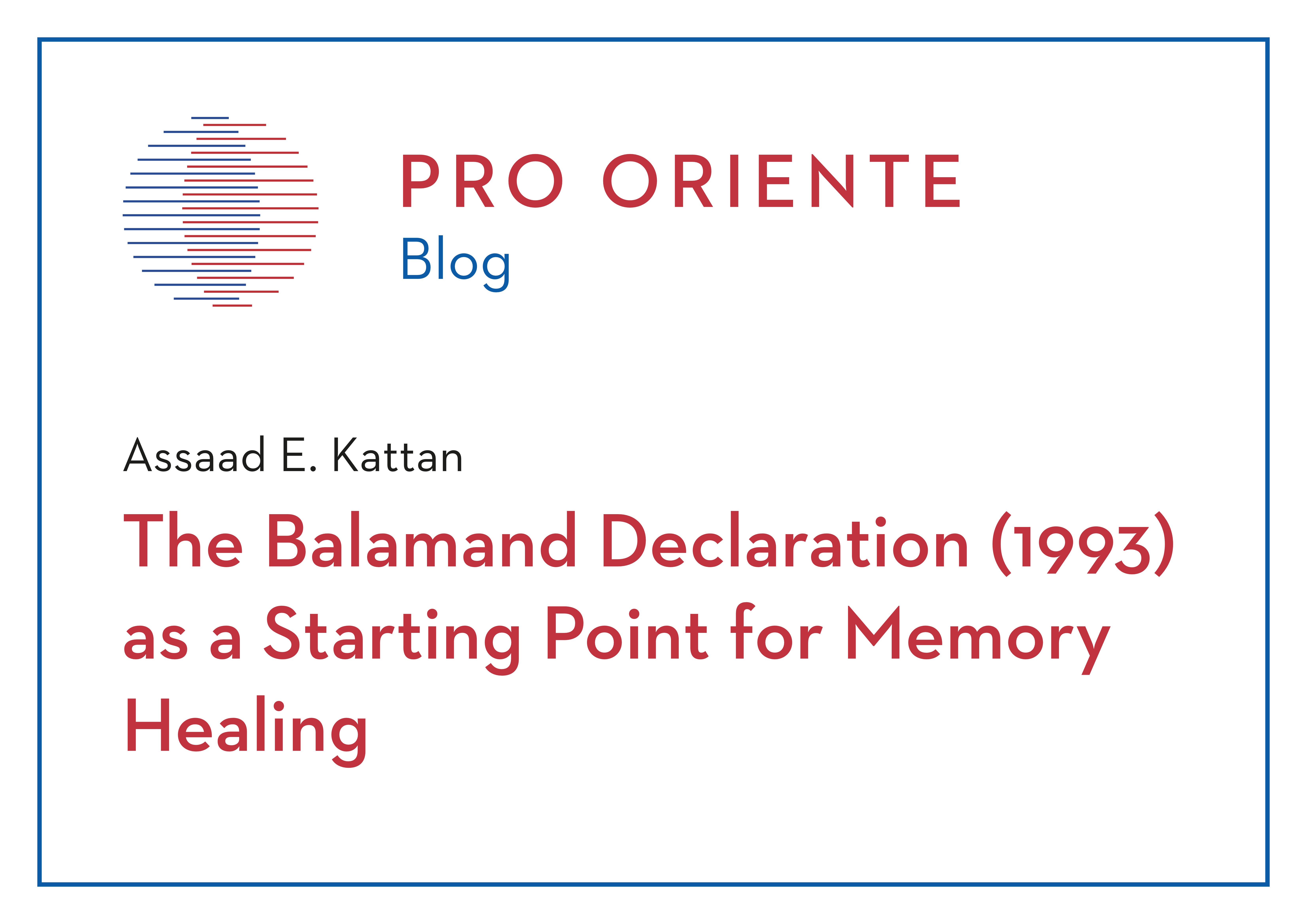The Balamand Declaration (1993) as a Starting Point for Memory Healing
07. November 2024
Thema: Healing of Wounded Memories

1. First of all, it should be noted that the Balamand Declaration, unlike its predecessors such as the documents of Munich (1982), Bari (1987), and Valamo (1988), has a very specific context. It emerged out of a crisis in Catholic-Orthodox relations related to the Eastern Churches united with the Roman Catholic Church after the fall of communism. The purpose of this declaration is primarily conciliatory, aiming to create a “serene atmosphere” (34) in order to advance dialogue (22). Therefore, it is just a step, a “necessary stage” (15) in the Orthodox-Catholic dialogue towards greater communion and full agreement “on the content of the faith” (15).
2. Thus, the declaration lays two pillars for this process of reconciliation: Firstly, uniatism is no longer acceptable today neither as a method nor as a model of unity (12) because, secondly, the Catholic and Orthodox Churches have learnt to see themselves as “sister churches” (14). There ensues that the Eastern Catholic Churches have the right to exist and act in accordance with “the spiritual needs of their faithful” (3). In this sense, the Balamand Declaration contains a valid theological starting point for the process of healing memory. However, it poses the following challenges to our conscience: Firstly, to develop an appropriate hermeneutic of history that helps us recognize historical wounds, in all their acuteness, without denying the legitimacy of what existed in the past and what exists in the present. Secondly, the integration of Eastern Catholics, theologically, psychologically, and pastorally, into the logic of fraternity advocated by the Balamand Declaration. While the document refrains from using the metaphor of the ‘bridge’ between East and West for Eastern Catholics, which was for some of them an identity marker, it assigns them a significant role in paving the way towards “full communion between Catholic and Orthodox Churches” (21). Far from appealing to tense identity discourse, the declaration urges Eastern Catholics to take the task of reconciliation into their own hands.
3. In order to achieve all this, it is crucial that Orthodox and Eastern Catholics learn how to write their history together. Describing history in a joint manner is not only a scholarly exercise, but also an appropriate method for constructively dealing with the wounds of history and overcoming unexpressed emotions such as anger, resentment, and a sense of grievance. Hence, the production of a common ecumenical historical narrative is absolutely essential in healing wounded memories. The Balamand Declaration emphasizes this when it addresses the need for a common historiography, stressing the need to ensure “a correct and comprehensive knowledge of history” (30) in order to dispel prejudices and prevent history from being used polemically. But it also recommends treating the past with compassion and spiritual openness: “Whatever may have been the past, it must be left to the mercy of God, and all the energies of the Churches should be directed towards obtaining that the present and the future conform better to the will of Christ for his own”.
4. It does not follow therefrom that the Balamand Declaration does not contain gaps. For example, there is no clear-cut definition of what uniatism is. Despite its effort to characterize this movement from a historical point of view (7-12), the document gives the impression, perhaps because of its extremely contextual character, that uniatism is merely a Catholic phenomenon although some reliable scholars (R. Taft, E. C. Suttner) have argued that it was not limited to the Catholic Church. This hypothesis may be correct. However, it should be noted that Orthodox unionist tendencies have not usually lead to the establishment of parallel churches. In any case, there is an urgent need for a comprehensive and operative definition of what the unionist movement is. Such a definition would also shed light on the tension between the concept of individual freedom and the tendency to trivialize conversion (14; 24-25).
5. The Balamand Declaration not only lays the theological groundwork for the process of reconciliation and healing of memory, but also makes practical proposals. It proposes, among other things, upholding religious liberty (24) and freedom of conscience (27), seeking open dialogue and establishing joint local commissions to find solutions to concrete problems (26), condemning violence wherever it is used by a church community against a sister church community (27), and placing places of worship at the disposal of the sister church and celebrating alternately, whenever necessary, at different times in the same building (28). Catholic and Orthodox bishops in the same territory are invited to consult with each other in order to avoid misunderstandings and promote trust between the two churches (29). Future priests and those involved in pastoral and apostolic work should be educated in such a way as to overcome narrow ecclesiological theories and recognize the apostolic succession in the sister church and the authenticity of its sacramental life (30). Have our churches done all of this? Of course not, or very partially. Some of them received the Balamand Declaration with caution or even went so far as to criticize it, perhaps for psychological reasons hiding behind theological barricades. To sum up: There is no doubt that the Balamand Declaration needs to be updated. However, as a roadmap for a reconciliatory process leading to forgiveness and healing wounded memories on the basis of the Gospel (19), it has not lost any of its relevance.



